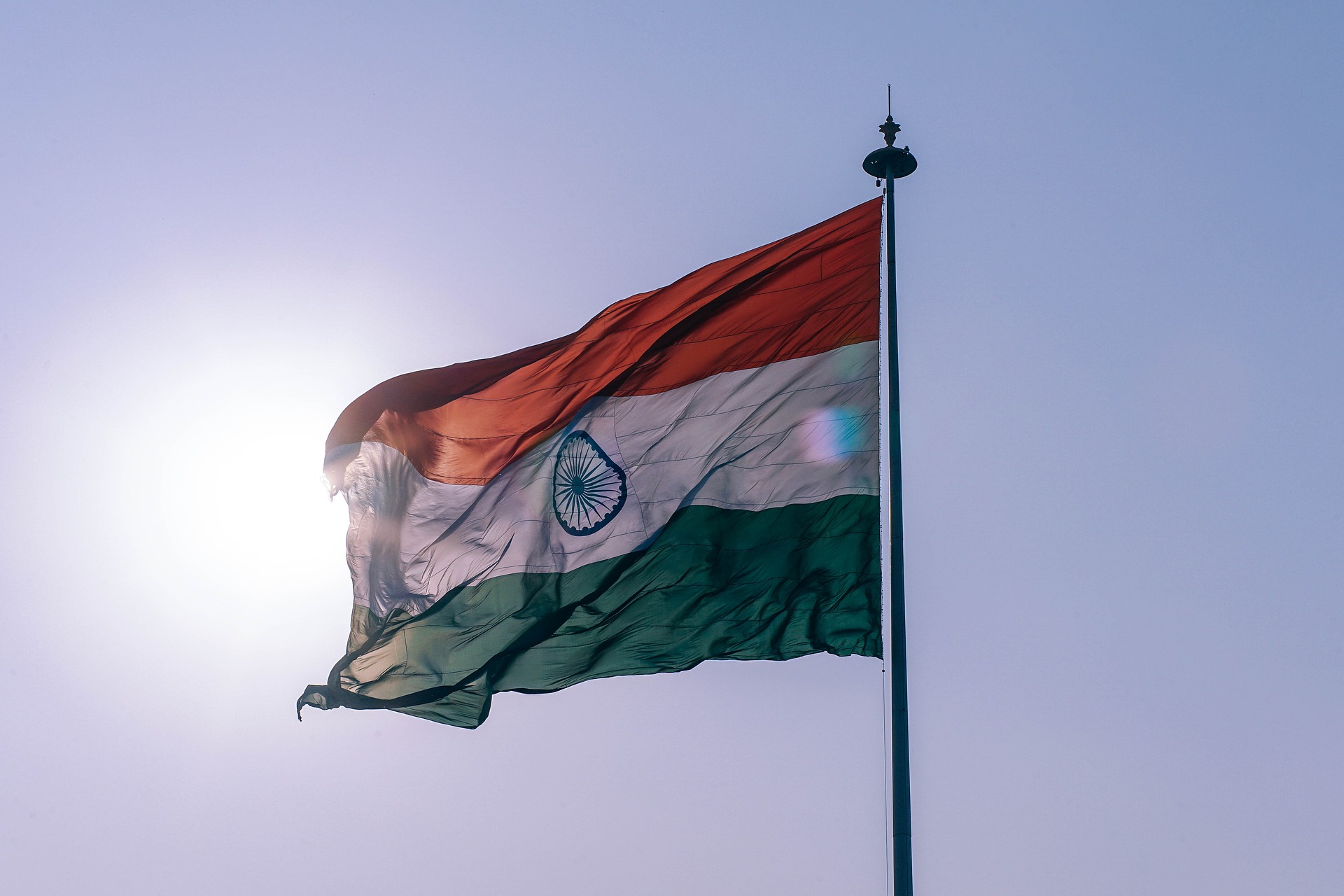目次
受験に使える国旗の雑学!【アジア編】
国旗はそう、その国を象徴するもの!
つまり、国旗を知ればその国を知れるんです!
国旗の由来や意味を知ると地理に通ずる部分だらけです。
今回はアジアの国旗についてみていきましょう!
インド、パキスタン、スリランカ
インドの国旗のオレンジはヒンドゥー教徒、緑はイスラム教徒、白は仏教やシク教徒といった少数派の宗教を表し、宗教間の融和を表ています。
このように、国内の宗教を色で表して融和を象徴している国旗は結構あるんです。
それでは特に混ざりやすい南アジアの国旗について宗教をテーマにみていきましょう。
これはパキスタンの国旗です。インドの国旗で説明したように緑はイスラム教徒のシンボルカラーで、白はその他の宗教を表ています。
実際、駐日パキスタン大使館は
The green represents Islam and the majority Muslims in Pakistan and the white stripe represents religious minorities and minority religions.
(緑はイスラムとパキスタンの多数派のムスリムを、白の縦縞は少数派とその宗教を表ている)
と説明しています。
最後にスリランカの国旗をみていきましょう。
スリランカも同様に
-
The bo-leaves at the four corners of the flag represent Buddhism and it’s influence on the nation.
(4つの角にある菩提樹の葉は仏教とその国への影響を象徴している。) -
The vertical stripe of orange represent the minority Tamil race and the green vertical stripe the minority Muslim race.
(縦縞のオレンジは少数派のタミル人、緑は少数派のムスリムを象徴している) -
The maroon colored portion of the flag manifests the other minor religions.
(小豆色の部分はその他の少数派の宗教を表している)
として、宗教の融和を表しています。
また、宗教だけではなく民族についても
-
The lion in the flag represents the Sinhala race.(ライオンはシンハラ人を象徴している)
-
The border round the flag, which is yellow in color, represents other minor races.(周囲の黄色の部分はその他の少数派の人種を象徴している)
としています。
スリランカといえば、タミル・イーラム解放の虎(LTTE)と政府との紛争がありましたが、なぜ虎かといえばシンハラ人の象徴がライオンだからなんです。
カフカス地域
上から、ジョージア、アゼルバイジャン、アルメニアの国旗です。それぞれの国の宗教についてごちゃごちゃになりやすいですが、これも南アジア同様国旗で分別がつけられます。
まず、キリスト教の象徴といえば十字架。イスラム教の象徴といえば三日月ですよね!
イスラム教の象徴が三日月であることについてはピンとこない人もいるかも知れませんが、
The use of these symbols pre-dated Islam by a thousand years. Although information about the origin of the crescent moon and star are still not clear but it Is predicted that this ancient symbol was used by people of central Asia and Siberia in worship of their Gods mostly of the sun, moon and sky. Actually, some historical text represent the Carthaginian goddess Tanit or Greek goddess Diana with a crescent moon. Constantinople and Istanbul former Byzantium used the symbol of the crescent moon in honour of the goddess Diana.
The early Muslim community was never documented to really have an acknowledged symbol. Even during the time of the Prophet Muhammad ﷺ Islamic armies and caravans only flew simple solid-colored flags for identification purposes alone. As generations passed by, Muslim leaders continued to use a simple black, white or green flag with no markings, writings or symbolism of any kind on it.
The crescent moon and star became affiliated with the religion of Islam during the Ottoman Empire. When the Turks conquered Constantinople (Istanbul) in 1453 CE, they adopted the city’s existing flag and symbol. Legend holds that the founder of the Ottoman Empire, Osman, had a dream in which the crescent moon stretched from one end of the earth to the other. Taking this as a good omen, he decided to keep the crescent as the symbol of his dynasty. There is speculation that the five points on the star represents the five pillars of Islam, but these are just mere speculations. The five points were neither standard on the Ottoman flags nor were they standards on flags used in the Muslim world today.
とあり、要は
・はっきりはしていない
・中央アジアやシベリアで天空の神の象徴として用いられていた
・カルタゴや古代ギリシャでも用いられ、コンスタンティノープル(後のイスタンブール)がディアナ(またはアルテミス)に敬意を評して三日月を用いた。
・初期のムスリムは特定のシンボルはなかった
・オスマン帝国で用いられ、それは建国の父オスマンがコンスタンティノープル攻略の際、三日月が空を覆うように広がっていったという夢をみて吉兆としたという言い伝えがあるため。
ということらしいです。
ついでにカフカス地方で民族紛争が起こった地域の国旗についてもみていきましょう!
おそらくというか確実に場所を覚えていないので、以下の記事をみながらみてみると理解が深まると思います。
アブハジア
ナゴルノ・カラバフ
北オセチア
南オセチア
チェチェン共和国
ダゲスタン
イングーシ
※ナヒチェヴァンはアゼルバイジャンの飛地であるため国旗はアゼルバイジャンと同じ
こうやってみると、ナゴルノ・カラバフはアルメニアに、南北オセチアはロシアに似た国旗を採用していますね。
バーレーン
バーレーンの国旗のギザギザは5つなのですが、これはイスラム教の六信五行の五行を表しています。
五行は
- 信仰告白(シャハーダ)
- 礼拝(サラー)
- 喜捨(ザカート)
- 断食(サウム)
- 巡礼(ハッジ)
でしたね!
ラオス
ラオスの国旗の青はメコン川を表しています。
受験問題あるあるでメコン川が通る国を聞く問題がありますが、もうラオスは迷わず答えられますね!
キルギス
キルギスの国旗に描かれているのはユルトの天井なんです!
ユルトとはテュルク語で移動式のテントのことを指します。
モンゴル語はゲル
中国語ではパオ(包)
と言います。小籠包も中国語発音でXiǎo lóng bāoなので、パオは中国語ということもこれで間違えないですよね!
参考文献
今回使用した国旗の画像は全てWikipediaから引用しています。
拡張子がsvgなので画像が劣化せずにオススメです!
・Musliminc.-The Relationship Between Islam And the Crescent Moon


